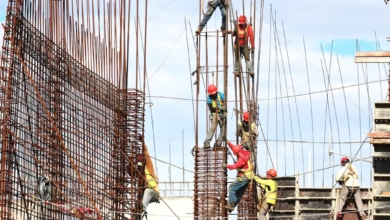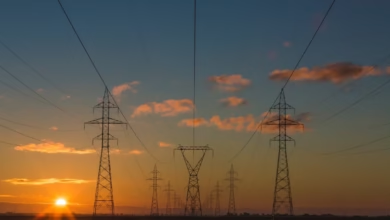The Comprehensive Guide to Metal Mining: From Exploration to Sustainable Production and Innovations in Metal Fabrication

Metal mining is a cornerstone of modern industry, playing a pivotal role in everything from construction to technology. As the demand for various metals continues to rise, understanding the intricate processes involved in their exploration, extraction, and production becomes increasingly important. This article will take you on a journey through the world of metal mining, highlighting the essential phases from exploration to sustainable production practices. We will delve into the different types of metals, including precious metals like gold and platinum, industrial metals such as copper and aluminum, and the emerging significance of rare earth metals and battery metals.
Moreover, we will explore the latest innovations in metal fabrication, emphasizing trends like 3D printing metals, which are revolutionizing the industry. Sustainable metal production is more crucial now than ever, as we strive to balance resource extraction with environmental stewardship. Additionally, we will examine the growing importance of metal recycling, which helps mitigate metal corrosion and reduces the need for new mining operations.
Join us as we uncover the complexities of metallurgy and metal alloys, and how they contribute to the development of a sustainable future in metal mining, while also addressing the financial aspects of gold and silver investing. Whether you're involved in the aerospace, energy, or automotive sectors, understanding these metal trends is essential for navigating the dynamic landscape of metal commodities.
- 1. The Journey of Metal Mining: From Exploration to Sustainable Production
- 2. Understanding Metal Types: Precious, Industrial, and the Rise of Rare Earth Metals
- 3. Innovations in Metal Fabrication and Recycling: Trends in 3D Printing and Sustainable Practices
1. The Journey of Metal Mining: From Exploration to Sustainable Production
The journey of metal mining is a multifaceted process that begins with exploration and culminates in the sustainable production of various metals. This journey is crucial not only for the economy but also for the advancement of technology and infrastructure across multiple industries, including construction, automotive, aerospace, and energy.
The first stage, exploration, involves identifying and assessing locations rich in metal commodities. This phase often employs geological surveys and advanced technologies to locate deposits of precious metals like gold and silver, as well as base metals such as copper, zinc, and aluminum. Rare earth metals, critical for modern electronics and renewable energy technologies, are also targeted during this stage.
Once potential sites are identified, the extraction process begins. This can involve both surface and underground mining techniques, depending on the depth and type of metal being mined. Industrial metals, such as steel and aluminum, are extracted to meet the demands of various sectors. Ferrous metals, known for their magnetic properties and strength, are primarily used in construction and manufacturing, while non-ferrous metals, like copper and lithium, are essential for electrical applications and battery production.
Sustainable metal production has become a key focus in recent years. The mining industry is adopting practices aimed at minimizing environmental impacts and enhancing resource efficiency. This includes implementing advanced metallurgy techniques to reduce metal corrosion and improve recycling rates for metal alloys. Metal recycling plays a vital role in achieving sustainability, allowing for the recovery and reuse of valuable materials, thus reducing the need for new mining operations.
As consumer interest in gold investing and silver investing grows, the market for jewelry metals has expanded. The demand for energy metals, critical for renewable energy systems and battery technologies, is also on the rise. Furthermore, metal trends such as the use of 3D printing metals are revolutionizing production methods, enabling manufacturers to create complex designs while reducing waste.
In summary, the journey of metal mining—from exploration through extraction to sustainable production—highlights the importance of metals in our daily lives and the ongoing efforts to ensure that these resources are utilized responsibly. As the industry continues to evolve, it must adapt to new challenges and opportunities, ultimately leading to a more sustainable future for metal production and usage.
2. Understanding Metal Types: Precious, Industrial, and the Rise of Rare Earth Metals
Understanding the diverse types of metals is crucial in grasping the broader landscape of metal mining, exploration, and production. Metals can be broadly categorized into precious metals, industrial metals, and the increasingly important rare earth metals, each playing distinct roles in various industries.
Precious metals, such as gold, silver, platinum, and palladium, are highly valued for their rarity and various applications. Gold investing and silver investing have long been popular among investors seeking stable commodities that often retain their value during economic fluctuations. These metals are not only used in jewelry and luxury items but also in electronics and aerospace applications due to their excellent conductivity and resistance to corrosion.
On the other hand, industrial metals, including ferrous metals like steel and non-ferrous metals such as aluminum, copper, and zinc, form the backbone of many industries. They are essential in construction, automotive manufacturing, and energy sectors. For instance, copper is widely used in electrical wiring and plumbing, while aluminum’s lightweight properties make it ideal for aerospace applications. The demand for these metals is also driving advancements in metal fabrication techniques and sustainable metal production practices, ensuring that industries can meet growing needs while minimizing environmental impacts.
Additionally, the rise of rare earth metals has transformed the metal mining landscape. These metals, which include lithium, used in batteries, and other materials critical for modern technologies, have become indispensable in the production of electronics and renewable energy solutions. The increasing reliance on electric vehicles and renewable energy sources has heightened the importance of metals like lithium and cobalt, leading to new trends in metal commodities and mining strategies.
Lastly, as technology evolves, so do the applications for metals. Innovations in 3D printing metals are revolutionizing manufacturing processes, allowing for more efficient production methods and the creation of complex metal alloys tailored to specific applications. This trend not only enhances the efficiency of industries but also contributes to the growing emphasis on metal recycling, helping to reduce waste and promote sustainable practices in metallurgy.
In conclusion, understanding the different types of metals, their applications, and emerging trends is vital for navigating the metal mining industry. From precious metals that adorn jewelry to industrial metals that build infrastructure, and rare earth metals that power the future, each category plays a pivotal role in our economy and technological advancements.
3. Innovations in Metal Fabrication and Recycling: Trends in 3D Printing and Sustainable Practices
Innovations in metal fabrication and recycling are transforming the landscape of metal mining and production, driven by advancements in technology and a growing emphasis on sustainability. One of the most notable trends is the integration of 3D printing metals into manufacturing processes. This innovative method allows for the rapid prototyping and production of components using various metals, including steel, aluminum, and titanium. The ability to create complex geometries reduces material waste and enhances the efficiency of production, which is especially beneficial in sectors such as aerospace metals and automotive metals.
Furthermore, the rise of metal recycling has become a cornerstone of sustainable metal production. As awareness of environmental impacts increases, industries are turning to metal recycling not only to reduce waste but also to recover valuable materials. Precious metals like gold and platinum, along with industrial metals such as copper and aluminum, can be reclaimed from electronic waste, leading to a circular economy in metal commodities. This practice not only lessens the demand for new metal mining but also minimizes the environmental footprint associated with metal extraction.
Additionally, the development of new metallurgy techniques is making it possible to create advanced metal alloys that enhance performance while being more sustainable. For instance, the production of battery metals like lithium and zinc is becoming more efficient, supporting the growing demand for electric vehicles and renewable energy sources. These innovations are leading to a shift in how metals are perceived; they are no longer just raw materials, but vital components of sustainable technologies.
With the increasing focus on sustainable practices, the metal industry is also exploring options to mitigate issues like metal corrosion and improve the longevity of materials used in construction and manufacturing. By employing coatings and treatments that enhance the durability of ferrous and non-ferrous metals, industries can further reduce their reliance on new materials and promote more responsible usage of existing resources.
In conclusion, the innovations in metal fabrication and recycling are not only paving the way for more efficient production processes but also ensuring that the future of metal mining aligns with the principles of sustainability. As trends like 3D printing metals and advanced metallurgy continue to evolve, they are set to redefine the landscape for both base metals and precious metals, ultimately benefitting sectors from jewelry to aerospace.
In conclusion, the landscape of metal mining is undergoing a significant transformation, driven by the increasing demand for various metals across industries and the urgent need for sustainable practices. From the initial exploration of precious metals like gold and platinum to the extraction of essential industrial metals such as aluminum and copper, the journey of metal mining is complex yet vital to our modern economy. Understanding the diverse categories of metals, including ferrous and non-ferrous metals, as well as the emerging importance of rare earth metals and battery metals, highlights the intricate relationship between mining and contemporary technology.
Innovations in metal fabrication, including the rise of 3D printing metals, are revolutionizing how we approach metal production and recycling, pushing the boundaries of metallurgy and sustainable metal production. As we embrace trends in metal recycling and seek to minimize metal corrosion and waste, the future of metal commodities looks promising, particularly in sectors such as construction, aerospace, and automotive.
Investors are increasingly recognizing the potential of metal investing, particularly in precious metals and base metals, as they navigate evolving market dynamics. As we move forward, it becomes imperative to prioritize sustainable practices within the metal mining industry to ensure a responsible approach to resource extraction and utilization. By embracing these changes, we can pave the way for a more sustainable and innovative future in metal mining and production.
References:
– Author, A. (Year). Title of Source. Retrieved from URL
– Author, B. (Year). Title of Source. Retrieved from URL
– Author, C. (Year). Title of Source. Retrieved from URL





